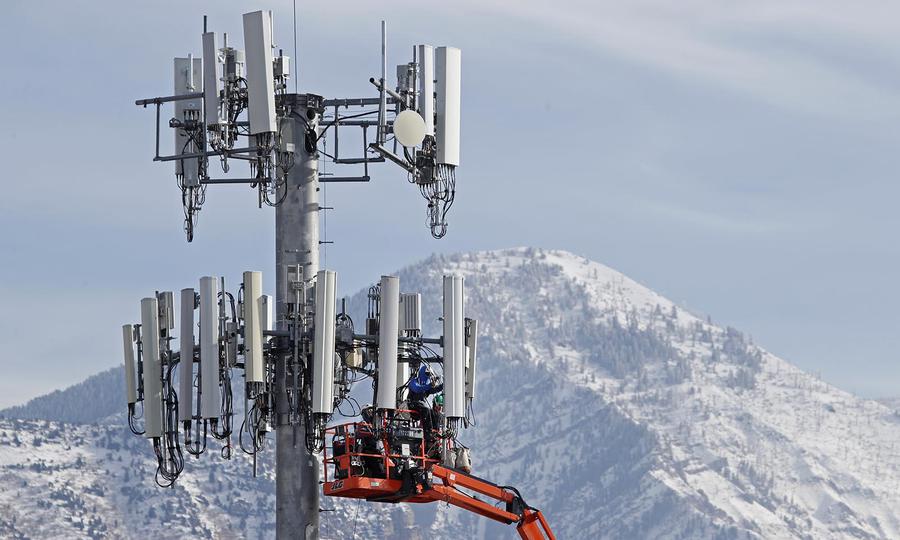(ATF) China’s switch to investment-led growth is a good opportunity for it to build new infrastructure which will help it climb up the value chain and evolve into a modern, digital society.
While this raises the risk of over-investment and pile-up of bad debts, similar to the time when Beijing leaned on investments in the aftermath of the global financial crisis, the world’s second economy has little choice this time around.
“China sees the need to accelerate its technological advancement and reduce its dependency on tech imports given rising geopolitical tensions over the last two years,” said Michelle Lam, Greater China economist at Societe Generale.
Earlier this month China reported that its first-quarter GDP shrank 6.8%, as a nationwide lockdown to battle the spread of the coronavirus crimped domestic demand, slammed production activity and halted movement of goods and its 1.4 billion citizens.
This negative growth was the first since 1992, when the National Bureau of Statistics (NBS) started to release economic growth numbers on a quarterly basis.
And it triggered policymakers into action as China opened its tried and tested playbook of boosting growth through investments.
14th five-year plan
This week, state planning agency National Development and Reform Commission unveiled a blueprint aimed at fulfilling China’s 14th Five Year Plan vision to transition towards a high-income economy. The focus will be on four priority areas: digitalisation, further economic and financial market opening, green and sustainable development and support for under-developed regions.
“I think the so-called new ‘infra(structure)’ is to differentiate from the old ‘infra’ (railway, roads). The most important thing is always the multiplier effects of these investments,” Hao Zhou, senior EM economist Asia at Commerzbank, said. “I think some of these makes sense – for example, people need to work everywhere in the near future, and online shopping will be dominating the consumption.”
Economists reckon China has a multiplier effect of around three, higher than any other developed economies. This means a one dollar increase in real government spending can raise real GDP immediately by about $3. This shows why government spending in China is so effective in reversing economic slowdowns even though it may involve wasteful expenditure.
Fitch Ratings said contribution from new infrastructure projects may become more salient in the medium-to-long term due to their bigger multiplier effects on driving total investment growth than traditional projects, with higher projected returns that may attract greater participation from social capital.
Undesirable effects
When it last leaned on investments – via a 4 trillion yuan (US$575 billion) stimulus package after the global financial crisis in 2008/2009, it also had undesirable effects.
While this boosted economic growth, given China’s large multiplier effect, it also led to a housing bubble and left a trail of bad debts as wasteful projects were unable to pay for themselves.
“The major concern, as always, is whether this will lead to over-investment, as we have seen with the solar industry. These could eventually lead to capacity cuts and bad debt problems with the financial sector. Even today, China is not done with resolving the debt problem of local government financing vehicles resulting from the massive infrastructure investment boom in 2009 and 2015,” said Societe Generale’s Lam.
NDRC said the “New Infrastructure” projects are focused on seven areas: 5G networks, industrial internet, inter-city transportation and inner-city rail systems, data centers, artificial intelligence, ultra-high voltage, and new energy vehicle charging stations.
In its 5-year investment plan, spending on these new infrastructure projects is estimated to reach nearly 2 trillion each year, unlocking at least 10 trillion yuan worth of direct investment and 17 trillion indirect investment by 2025, ICBC Standard Bank wrote in a note.
“This means Beijing has to make tough decisions on the proposed 10 trillion yuan infrastructure spending for 2020 – a powerful yet unprecedented investment package equivalent to more than 10% of China’s GDP in 2019,” said Jinny Yan, managing director and chief China economist at ICBC Standard Bank.
“Assuming part of this spending can be funded by a widened official fiscal budget (c. 3.5% of GDP in 2020), the outstanding investment still requires approval of a much generous annual quota under the special purpose bond scheme.”
And while funding these gigantic projects would not be an issue, authorities need to be mindful about getting carried away in their efforts to pump prime the economy.
“The government needs a well-thought plan not to over-build, be it 5G towers or NEV chargers. This time round, the government has emphasized on rolling out ‘efficient investment’ and promoting private-sector participation. It remains to be seen if China manages to avoid wasteful investment, but there is always a temptation when policymakers are desperate to stimulate,” Lam said.






















